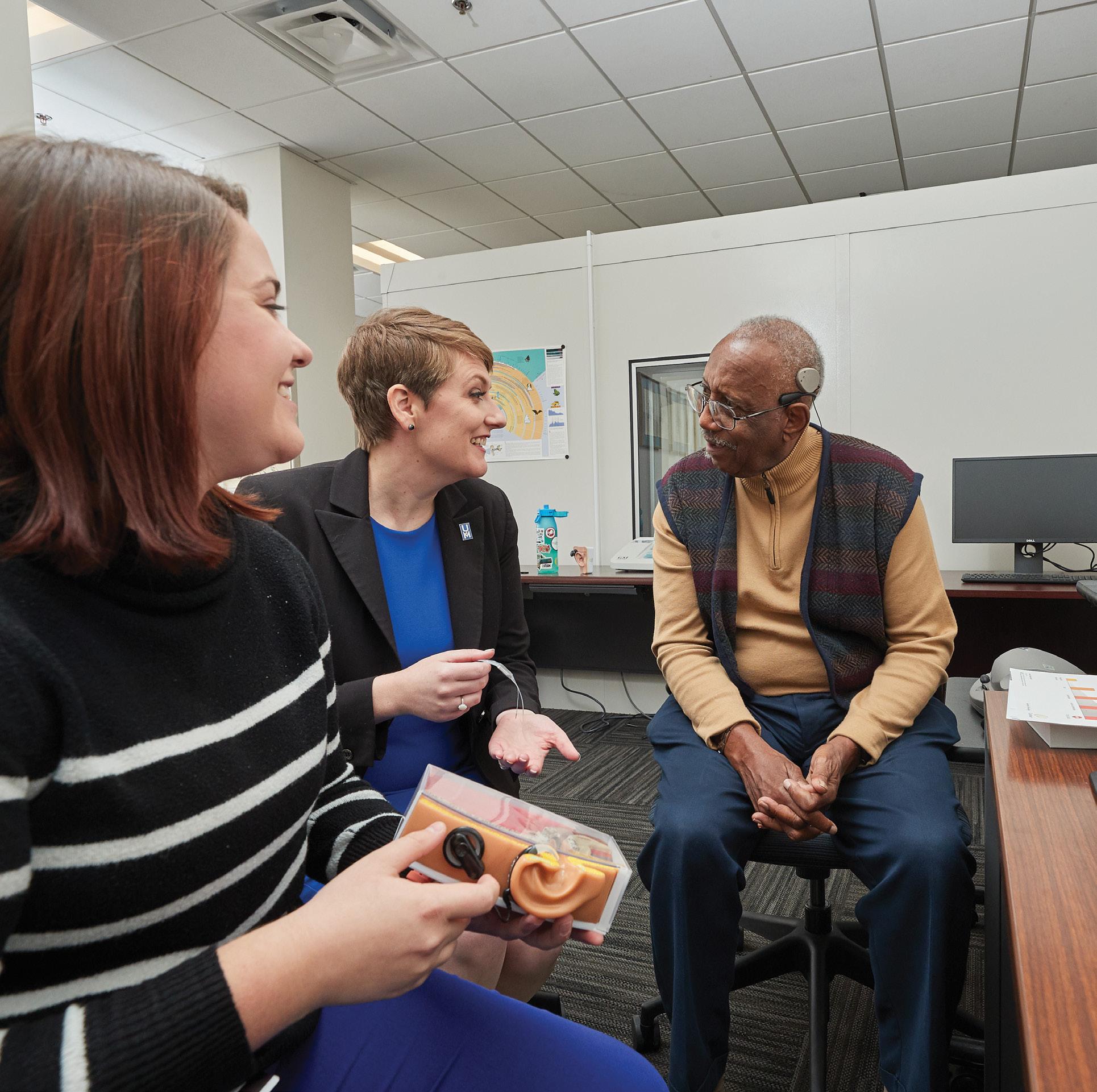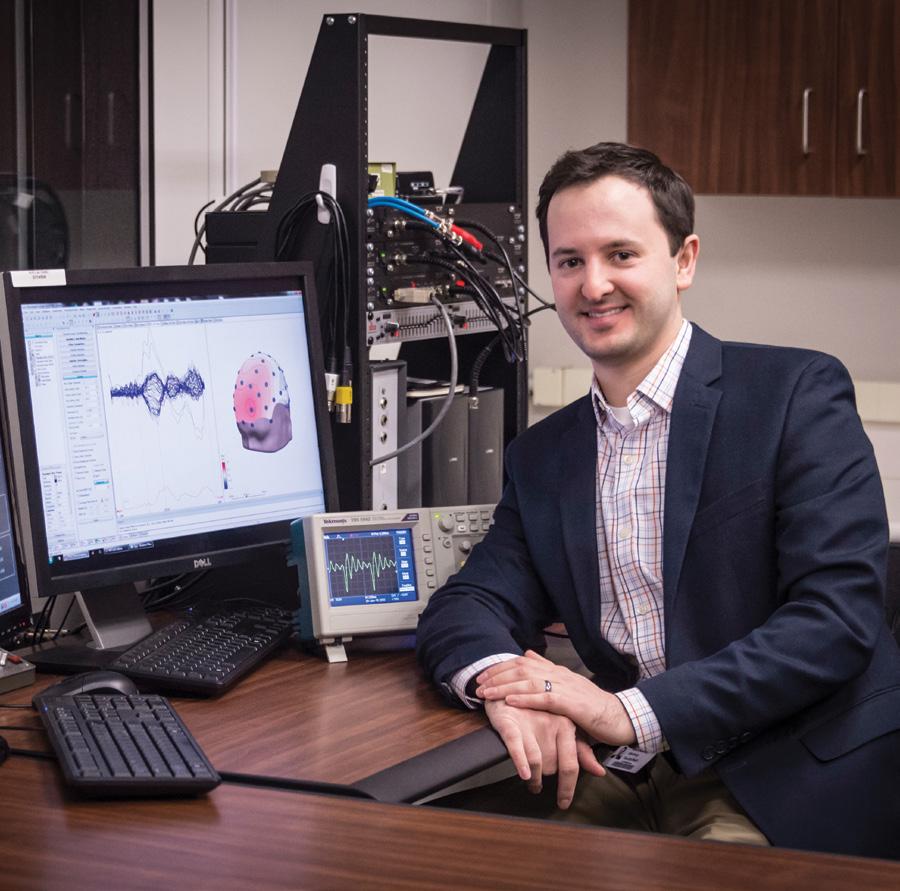SPEECH
RESEARCH
Adult Neurogenic Communication Disorders Laboratory memphis.edu/ancd
Lynda Feenaughty, PhD is assistant professor in the School of Communication Sciences and Disorders. Dr. Feenaughty joined the faculty in 2017. She received her BS and MA in Communicative Disorders
Current Research and Applications Dr. Feenaughty’s current research focuses on investigating the relationship between neuropsychological function, speech motor control, and language characteristics, as
produced by the ANCD laboratory will enhance traditional clinical management of speech and language disorders and research practices. Additionally, she aims to advance a comprehensive theory of spoken
from SUNY Geneseo and received her PhD in Communicative Disorders at the University at Buffalo in 2016. She currently directs the Adult Neurogenic Communication Disorders Laboratory (ANCD) which is dedicated to research investigating the relationship between neuropsychological function and spoken language behaviors including speech motor control and language characteristics and their perceived speech adequacy secondary to neurodegenerative disease such as Multiple Sclerosis (MS).
well as the perceived speech adequacy in patients affected by multiple sclerosis. Multiple sclerosis is a main focus of the ANCD’s research, but other adult neurogenic disorders (Parkinson’s disease, stroke, etc.) affecting typically aging adults are also of interest. Results and data
language production that incorporates cognitive, linguistic and motor functions. Dr. Feenaughty regularly collaborates with the Aphasia Lab at the University of South Carolina and the Medical University of South Carolina to study fluency, inducing effects of speech entrainment and social circles in chronic aphasia.
Research Interests Dr. Feenaughty’s research interests include investigating acoustic and linguistic characteristics of connected speech to determine how cognitive function influences speech motor behavior and perceived speech adequacy in individuals with neurodegenerative disease. This involves taking a deeper look at cognitive-speech motor interaction, respiratory kinematics, motor speech disorders, and the impact of neuropsychological function on spoken language, as well as other associated aspects of this relationship.
18










